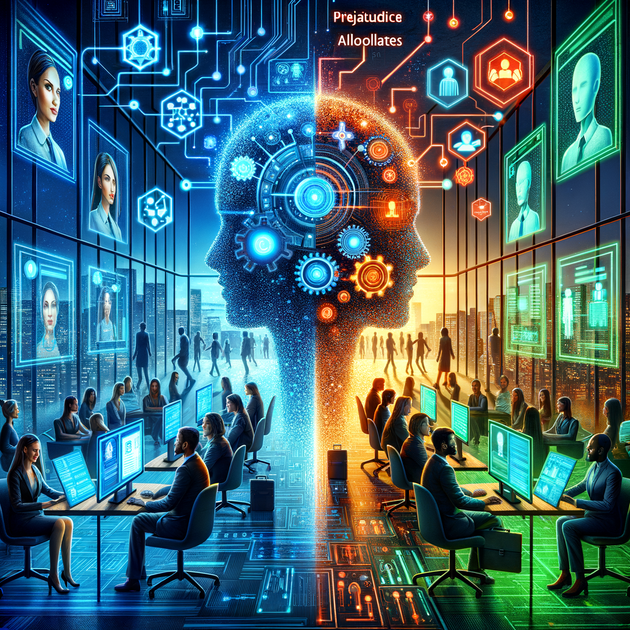The Double-Edged Sword of AI in Hiring: Battling Bias While Embracing Efficiency
Imagine this: After years of struggling to fill crucial positions swiftly, your company adopts an advanced AI-driven hiring platform. Resumes are screened, interviews scheduled, and candidates shortlisted with unprecedented speed. The future of recruitment seems to be here, and it’s remarkably efficient. But as you delve deeper, a disconcerting pattern emerges — the AI system appears skewed, favoring candidates who mirror your current workforce. This is not just a hypothetical scenario but a real-world challenge many organizations face today.
The Rise of AI in Recruitment
AI has revolutionized numerous aspects of modern life, and recruitment is no exception. Modern AI tools write job descriptions, streamline candidate screening processes, predict job acceptance probabilities, and even assess potential employees’ future performance. This technological shift saves countless hours for HR professionals, allowing them to focus on more strategic tasks. Yet, as Keith Sonderling, Commissioner of the US Equal Employment Opportunity Commission, points out, the integration of AI in hiring is fraught with both promises and perils.

Pros and Cons: A Delicate Balance
AI holds the potential to significantly enhance hiring practices by eliminating human bias. On paper, a carefully crafted AI system can objectively assess candidates purely on their qualifications and fit for the job. In reality, however, these systems are only as good as the data fed into them. A biased dataset results in a biased AI, potentially perpetuating and amplifying existing inequalities.
Example: In 2014, Amazon developed a hiring algorithm that inadvertently favored male candidates because it was trained on a dataset predominantly composed of resumes submitted by men over a decade. Despite efforts to correct this, Amazon eventually abandoned the project in 2017 due to persistent biases.
The Challenge of Diverse Data
Sonderling emphasizes the importance of using diverse datasets to train AI models. If your company’s AI model analyzes hiring patterns within a homogenous workforce, it will likely replicate this lack of diversity. However, a more carefully designed AI can help identify and neutralize existing biases, promoting fairer recruitment practices.
Another notorious example is Facebook’s $14.25 million settlement with the US government for discriminatory hiring practices under their PERM program, which excluded American workers in favor of temporary visa holders. This situation underscores the potential for AI, if improperly managed, to enforce systemic biases on a massive scale.
Example: HireVue, a company based in Utah, is making strides in this area. Their platform is built to mitigate bias, aligning with the US Equal Opportunity Commission’s Uniform Guidelines. They continuously review datasets for accuracy and diversity, ensuring fair assessments across all demographics.
Vigilance Against AI Bias
AI in hiring presents a double-edged sword. It can either dismantle or perpetuate inequalities depending on how it’s used. Employers must remain vigilant and proactive about bias. This includes collaborating with vendors who evaluate and minimize bias and implementing a governance structure for constant oversight of AI tools.

Dr. Ed Ikeguchi from AiCure highlights another critical point: AI is continually learning and must be regularly fed diverse, accurate data. Regardless of an algorithm’s credibility upon deployment, ongoing review and adaptation to new data are crucial to maintaining its fairness and effectiveness.
Future-Proofing AI in Hiring
To future-proof AI in hiring, companies must cultivate a culture of transparency and ongoing improvement. Regularly questioning how algorithms arrive at certain conclusions and ensuring all AI tools undergo rigorous peer reviews are essential steps. As the industry collectively gains a more skeptical and informed perspective on AI, it can better harness its benefits while mitigating its risks.
Engaging in regular audits of AI decisions, actively seeking diverse data sources, and fostering an inclusive development team are practical steps toward responsible AI use in hiring.
A Call to Action
What does your organization do to ensure the fairness of its AI-driven recruitment processes? How can you, as an HR professional, advocate for more diverse and equitable practices? Join the conversation and share your thoughts and experiences with us.
